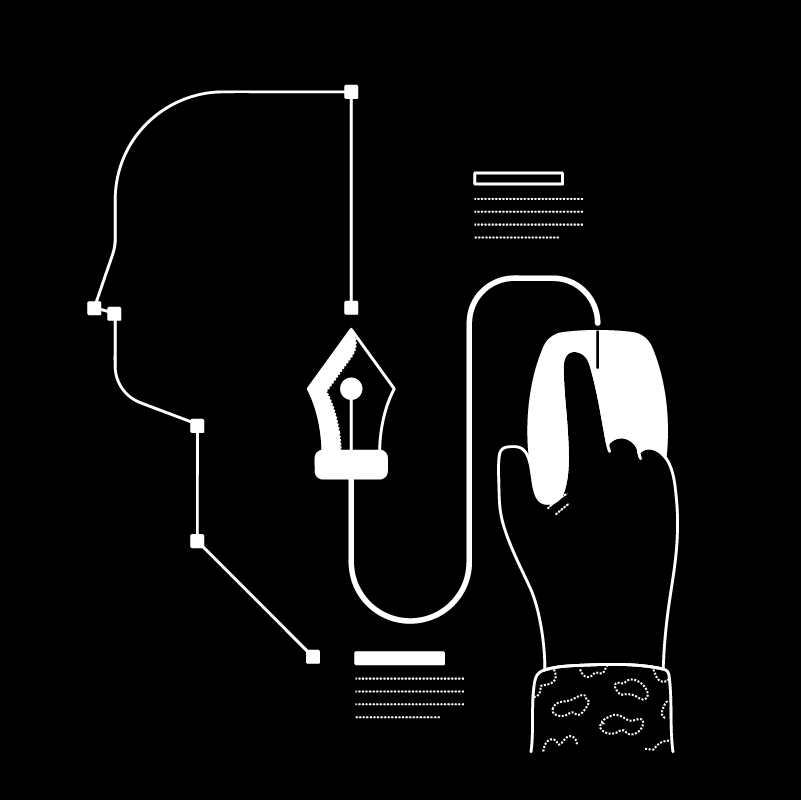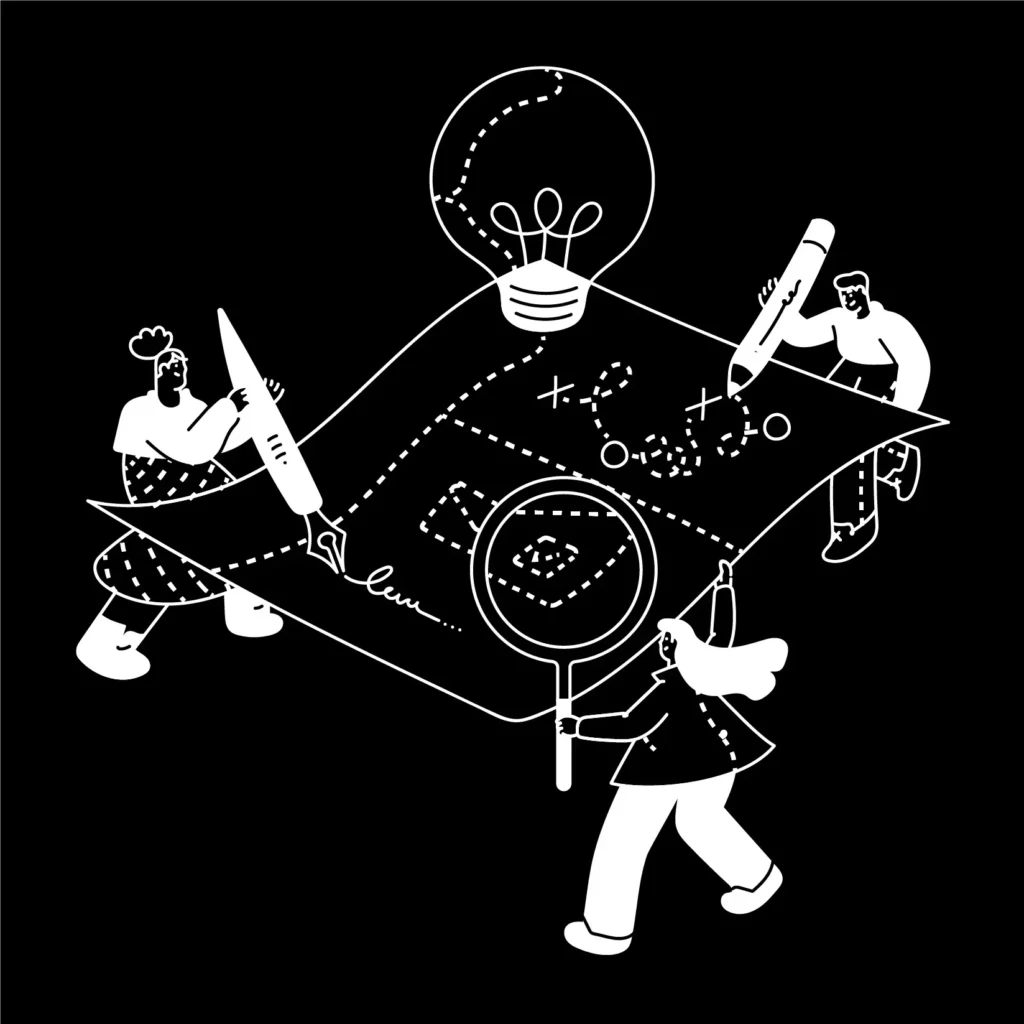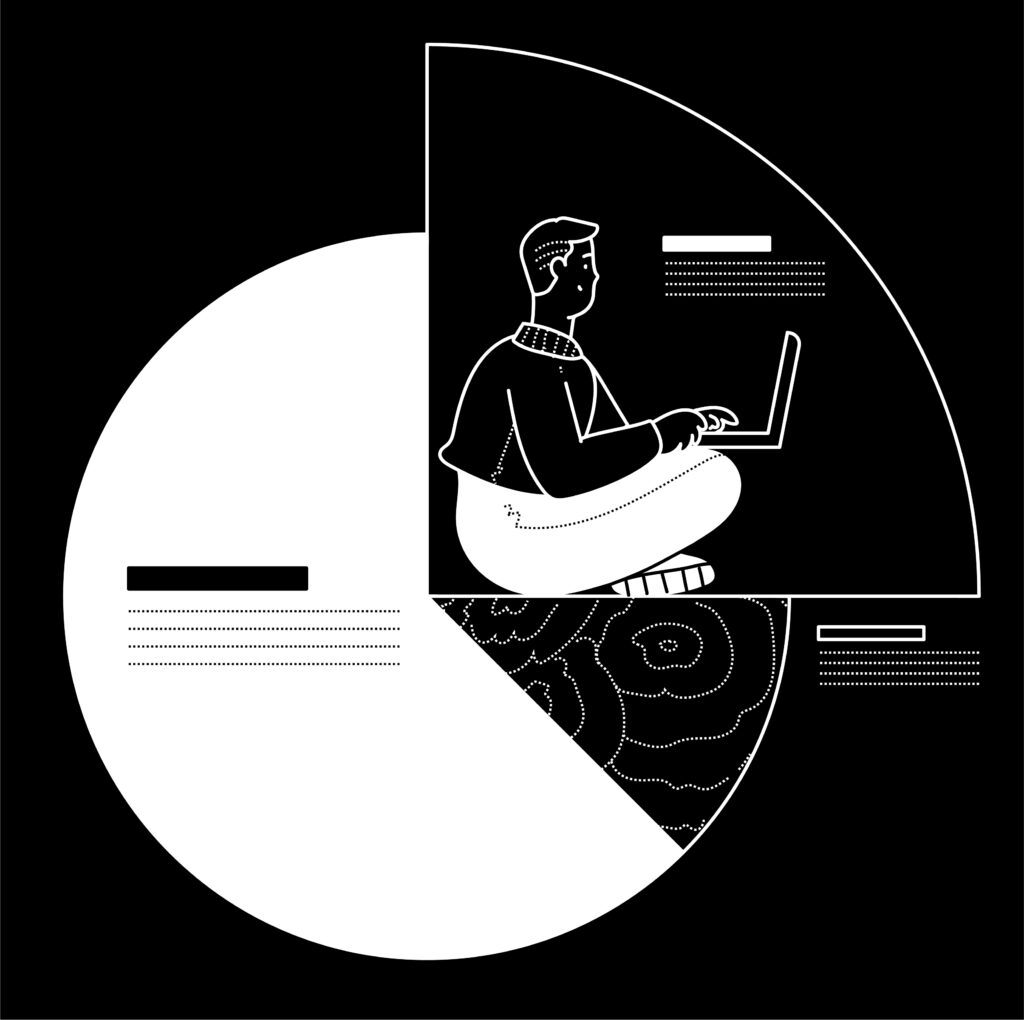You have probably heard of the term, whether it is used as a buzzword or as a sales talk. But what is design thinking really and how can it contribute to your company?
The power of Design Thinking
Design thinking has evolved slowly as a concept and has gained more traction over the past ten years. A popular definition is that design thinking is thinking, as a designer would. That’s about as vague as a definition can be. A much better definition comes from Tim Brown of IDEO: “Design thinking is a discipline that uses the designer’s sensitivity and methods to match people’s needs with what is technically feasible and what can convert a viable business strategy into customer value and market opportunity. ” In short, this means that a person or organization is constantly looking for a fruitful balance between reliability and viability, between art and science, between analysis and intuition, and so on. Using the most crucial tool every designer uses; abductive reasoning.
“In abductive reasoning, we try to suppose a fact by using supporting facts. Example: Some people cannot see (fact). John constantly runs into objects (supporting fact). So John cannot see (abduction). ”
The Design Thinking process
Simplified, the design thinking process is user-oriented, using an arsenal of tools and methods to solve a problem. Design Thinking is based on logic, imagination, intuition and systemic reasoning to explore the possibilities of what could be and create desired results that benefit the end user (the customer). The mindset of the designer is not problem-oriented, it is solution-oriented and action-oriented. It includes both analysis and imagination. A typical process for design thinking is as follows;
Discover (diverge): Work to fully understand the experience of the user for whom you developed a product or service. Do this by observing, interacting and fully empathising with your user. Of course, actual conversations with the user or people such as the user are of particular importance in this regard.
Purpose: To gain insights (Gold Nuggets)
Define (converge) : Process the findings to form a user point of view and boundary conditions, which forms a basis for the solution.
Goal: recognize and find opportunities (Insights)
Conceived (diverge): Explore a wide range of solutions by generating the widest number of diverse ideas. This way you go a step further than the obvious and the concept takes shape.
Goal: Idea formation (Winning Idea)
Deliver (converging): Working out and testing the best ideas so that they can be experienced. At the same time you get a good idea of how the user will deal with it and whether it is effective.
Goal: Testing your product or service (Viable Product)
The trick is to repeat the process, in order to constantly improve your product or service based on user feedback. The same process is illustrated in the way we work, whether it is the further development of a concept or idea, or the building of a new website. Design thinking helps with the development of a product or service that has a chance of success or the achievement of goals. From focusing on the problem or challenge, recognizing opportunities, to developing an actual solution.
Design as a method
Although becoming a good designer takes years, non-designers can learn to think like a designer and apply these skills to leadership and innovation. If you have a problem that design and technology can solve, don’t hesitate to apply design thinking in your scale-up or start-up.
“Most people make the mistake of thinking design is what it looks like. People think it’s this veneer – that the designers are handed this box and told, “Make it look good!” That’s not what we think design is. It is not just what it looks and feels like. Design is how it works. “Steve Jobs




